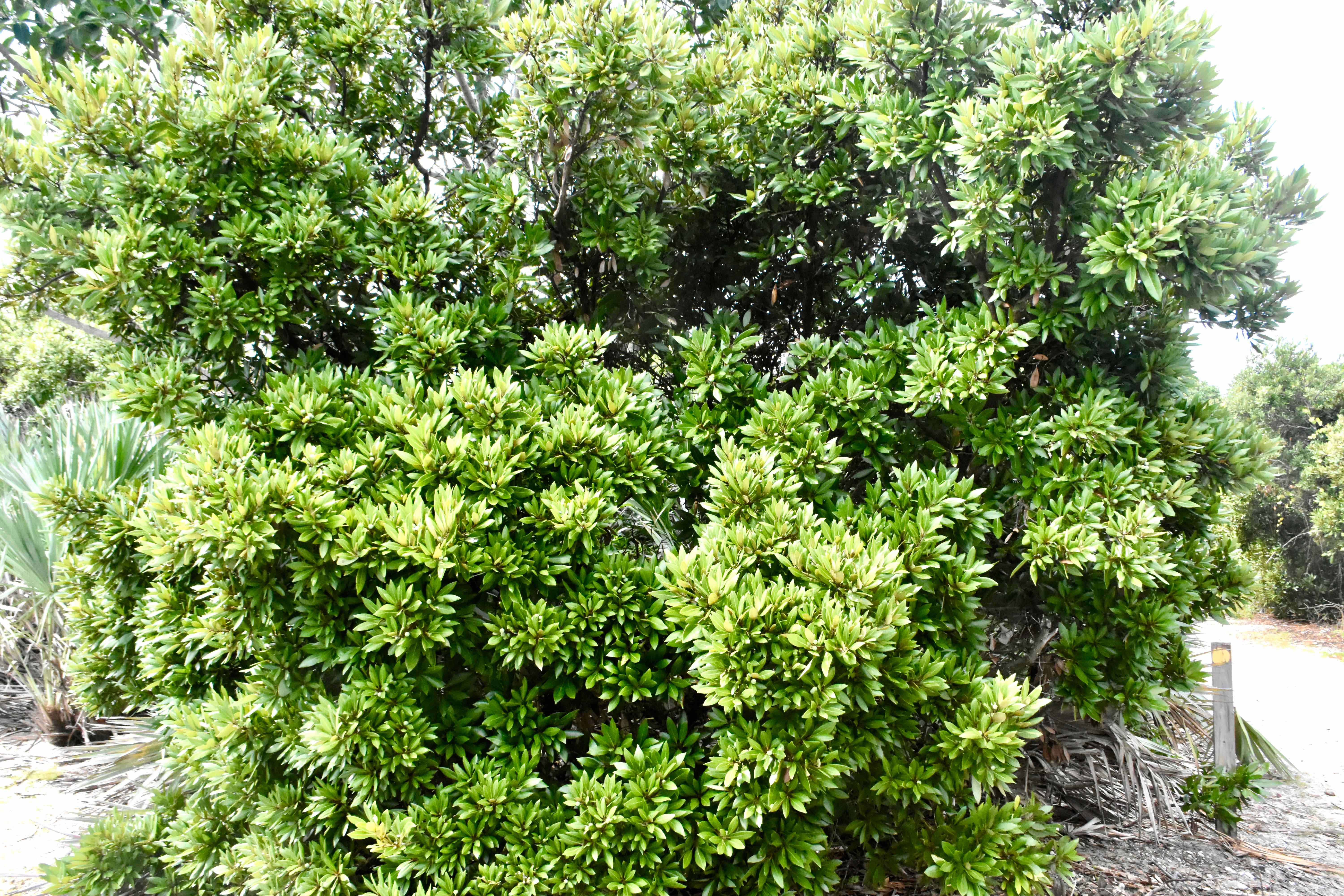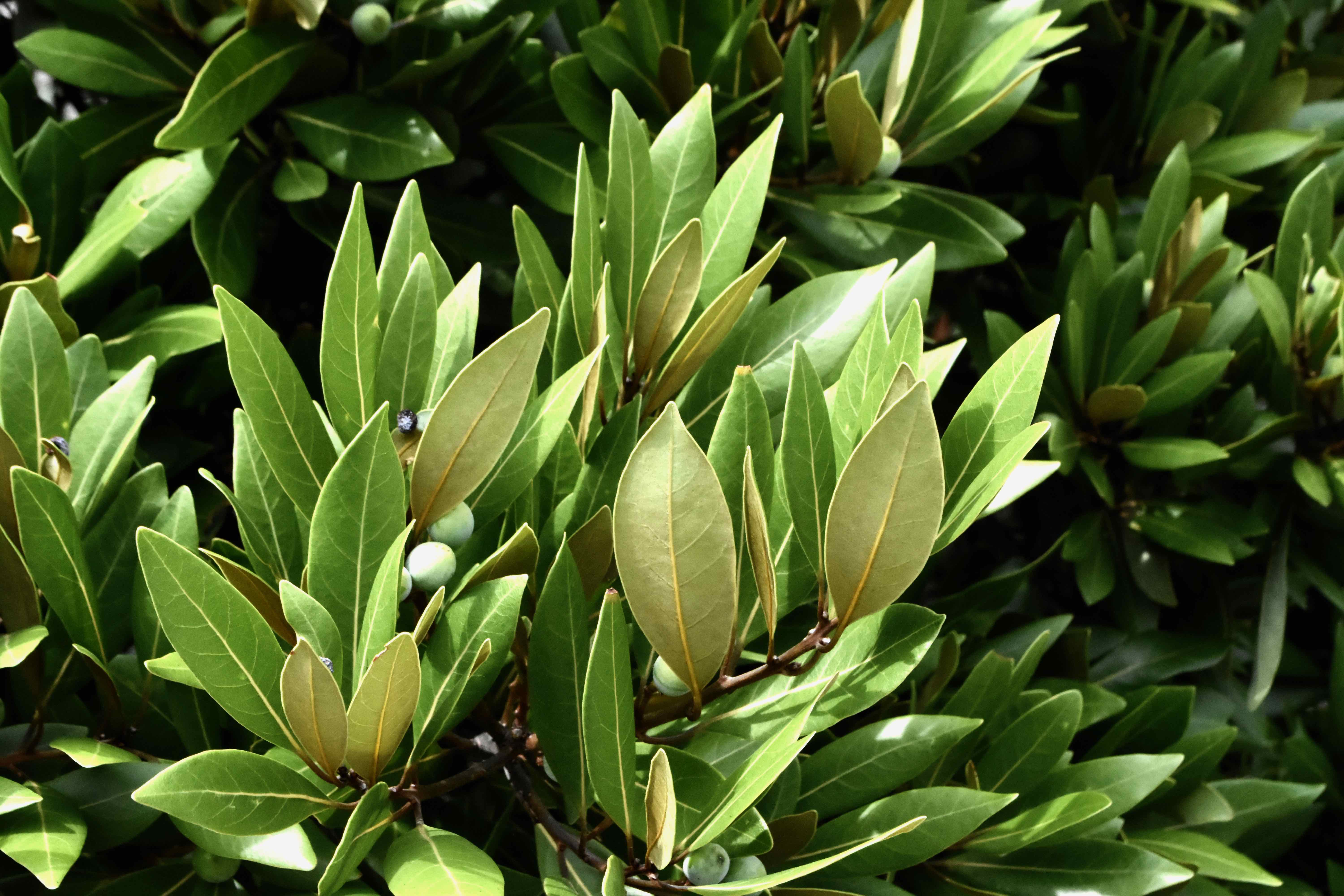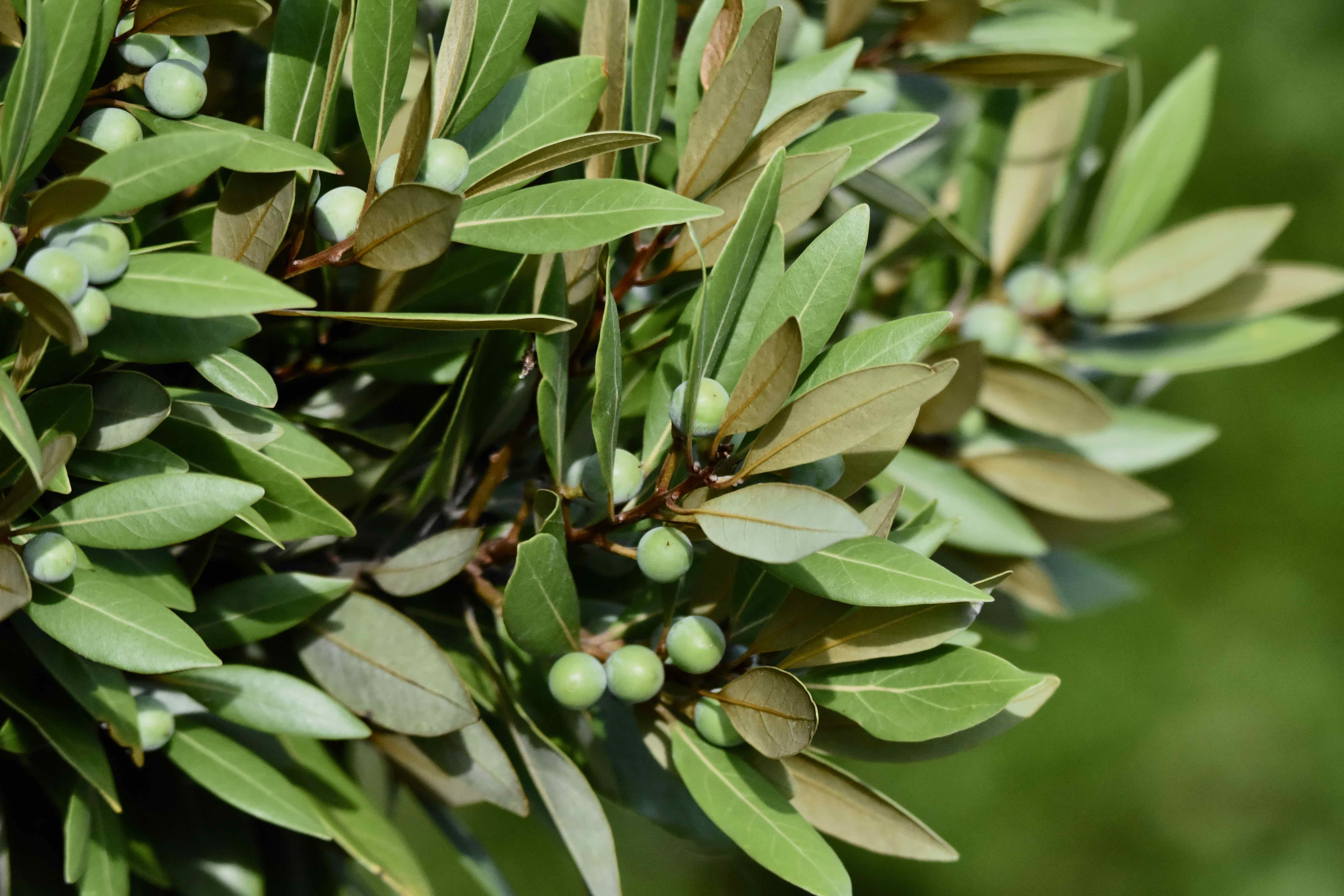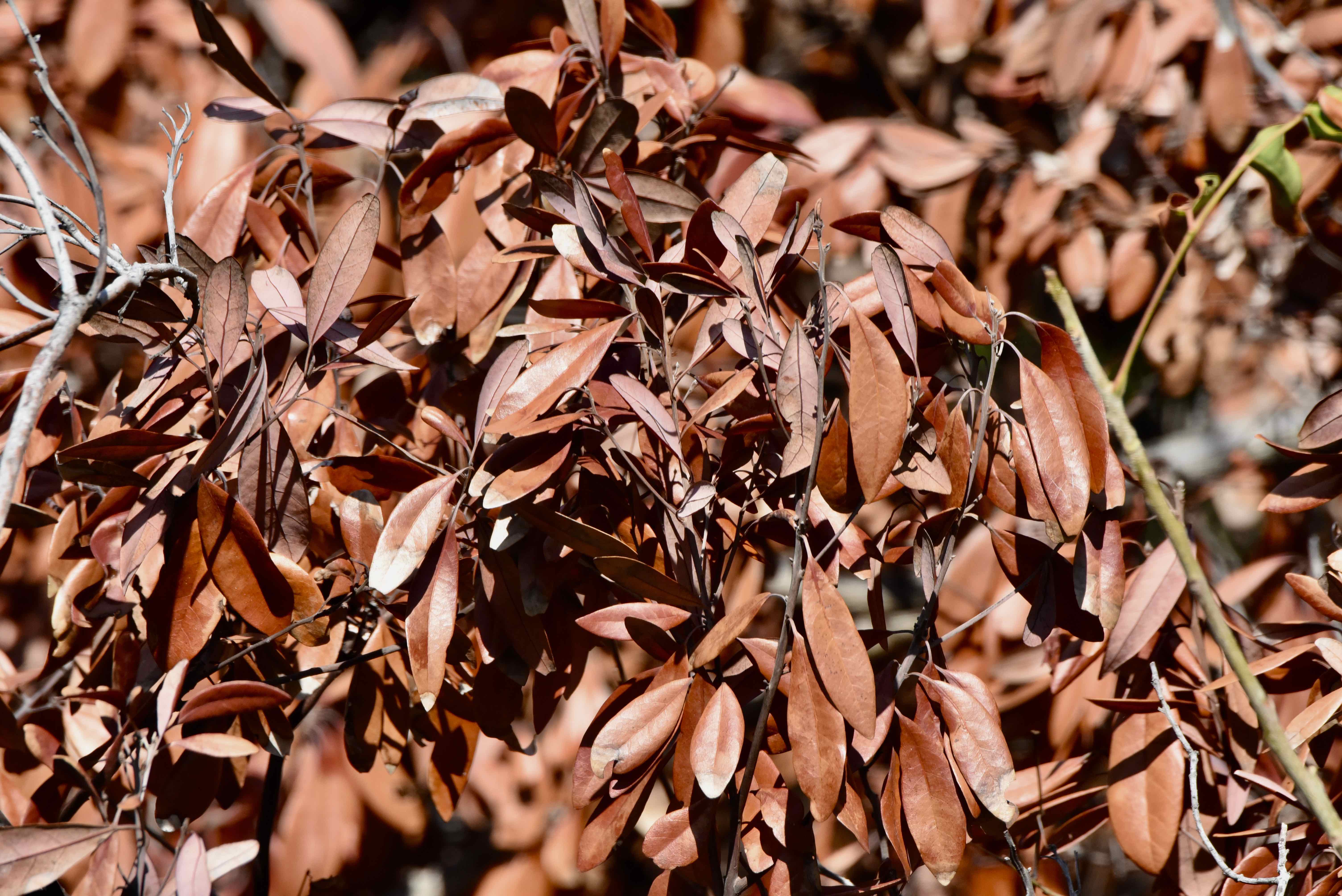
Red bay, photographed at Juno Dunes Natural Area, Juno Beach, Palm Beach County, in September 2018.
Yes, if you want, you could use red bay, Persea borbonia, as a substitute for the bay leaf you find in your local supermarket. Both are members of the laurel family, aka, Lauraceae, and their leaves when dried give flavor to soups and sauces.
However, we recommend sticking to the supermarket kind for a variety of reasons, including the fact that stripping leaves off trees is generally frowned upon if not illegal, especially if said trees are on public lands.
Red bay is a tall shrub or short tree found throughout the southeastern United States, generally from North Carolina to Texas. It's also found to some extent in Delaware and Virginia; Maryland considers it endangered. It's found in most Florida counties throughout both the Panhandle and the Peninsula sans mainland Monroe.
It generally ranges between 20 and 40 feet tall, but has been known to hit 70 feet or more in Florida. Leaves are stiff, lance-shaped, about three to five inches long and arranged alternately along the branch. The top side is shiny green; the underside has a coppery tinge, one of the key identifiers for red bay. Another key identifier: the leaves are often distorted by the presence of galls. Habitat for red bay includes coastal hammocks.
Come spring, red bay puts out small, inconspicuous white-green flowers that produce a fruit, technically called a drupe, that goes from green to blue to nearly black when ripe. They're food for wild turkeys and songbirds, black bears and white-tailed deer, who also munch on the foliage.
Red bay was an important plant in the lives of the Seminoles, who used it in various forms medicinally and ceremonially. It was used to stimulate appetite, to control diarrhea and vomiting and as a purge of sorts for doctors who had a patient die. The purge would allow the next patient to live. It was also used as an analgesic for numb and painful legs, neck and shoulders, and to break fevers.Today, red bay wood is used in cabinet-making, interior woodworking and in boat building. The tree is used in landscaping as an accent or specimen tree.
It is the host plant for the palamedes swallowtail butterfly and the spicebush swallowtail butterfly. Which brings us to another insect that uses red bay, the ambrosia beetle, an import from Japan that poses an existential threat to the species. The ambrosia beetle carries a fungus, which it "farms" and uses as food; when the bug bores into a red bay, the fungus causes a disease called laurel wilt, which inhibits the flow of water through the trunk, eventually killing the tree. One of the tell-tale signs that the fungus has killed a tree: the leaves remain on the branches long after its dead (see photo, bottom right).The beetle was introduced through some packing wood imported into Georgia around 2002; it was discovered in Florida in 2005, and has been found as far south as Miami-Dade County. Scientists are working on various ways to stop the disease, including fungicides and developing wilt-resistant stock. Laurel wilt is also a threat to Florida's avocado industry.
Red bay, also spelled redbay, is also known as Carolina bay, silkbay, shorebay, scrub-bay and swampbay.
Click on photo for larger image
Links for Red Bay



